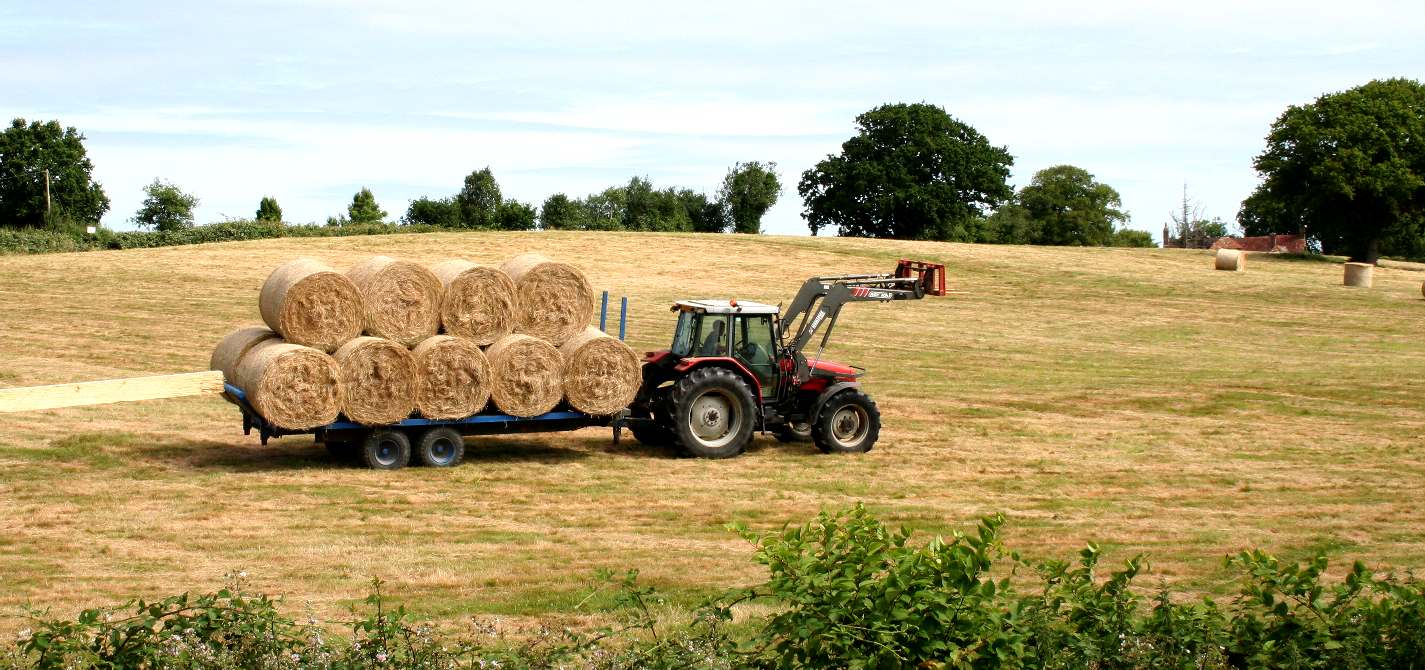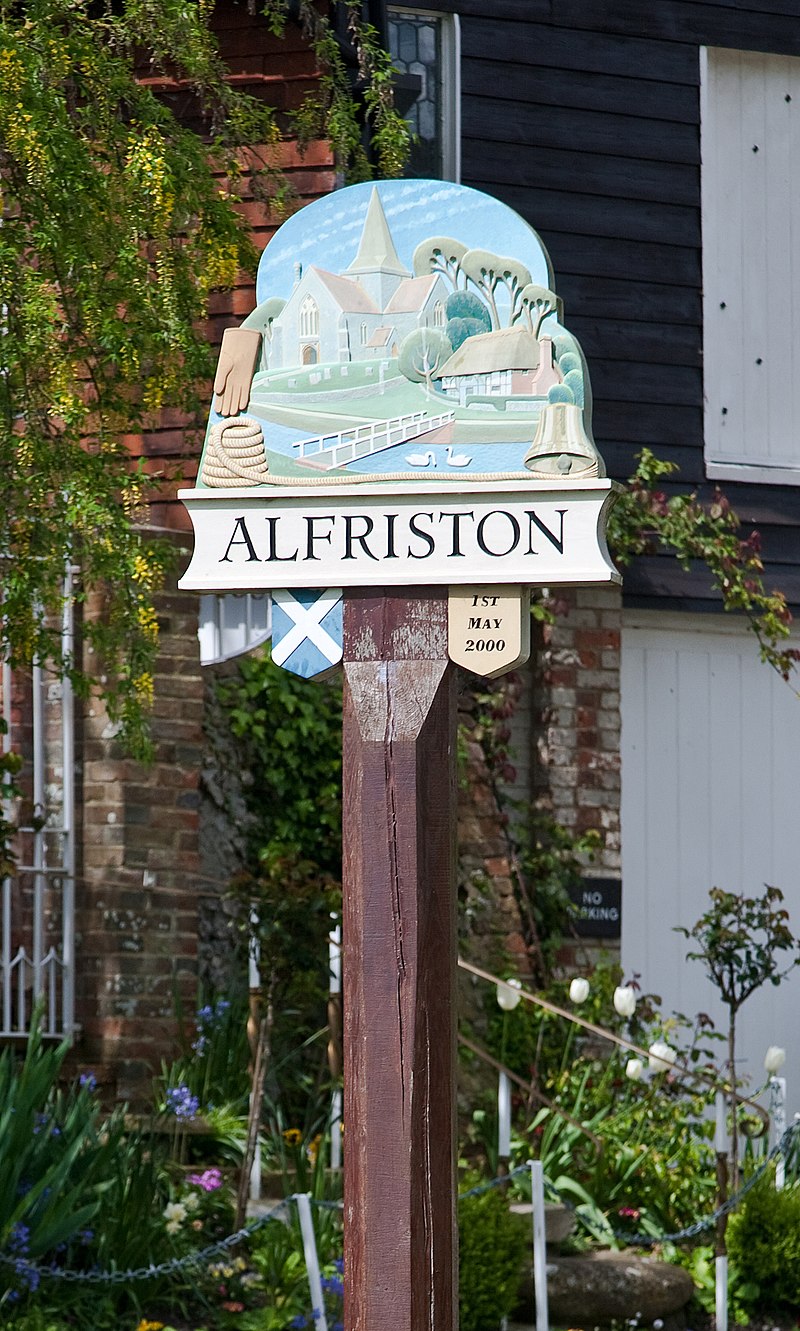
Alfriston
is sometimes famous for King Alfred burning the cakes, when it was
actually on the Somerset Marshes
Alfriston is a village and civil parish in the
East Sussex district of
Wealden, England. The village lies in the valley of the River Cuckmere, about four miles (6 km) north-east of Seaford and south of the main A27 trunk road and part of the large area of Polegate. The parish had a
population of 829 at the 2011 census.
There is strong evidence of ancient occupation of the area, since several Neolithic long barrows have been discovered on the surrounding Downs; among them, to the west is the fairly well preserved Long Burgh.
The place-name 'Alfriston' is first attested in the Domesday Book of 1086, where it appears as Alvricestone. It appears as Alfrichestuna in a French document circa 1150. The name means 'Ælfric's town or settlement'.
One building of historical importance is the Star Inn. Originally a religious hostel built in 1345 and used to accommodate monks and pilgrims en route from Battle Abbey to the shrine of St Richard, patron saint of
Sussex, at Chichester Cathedral, it became an inn in the 16th century. Wooden figures grace the upper part of the building, whilst in the front is a one-time ship's figurehead representing a red lion. The latter is connected with the Alfriston smuggling gang who used the inn as a base; their leader was transported to Australia in 1830. Another important historical building is Dean's Place Hotel which was built in the 17th century or earlier.
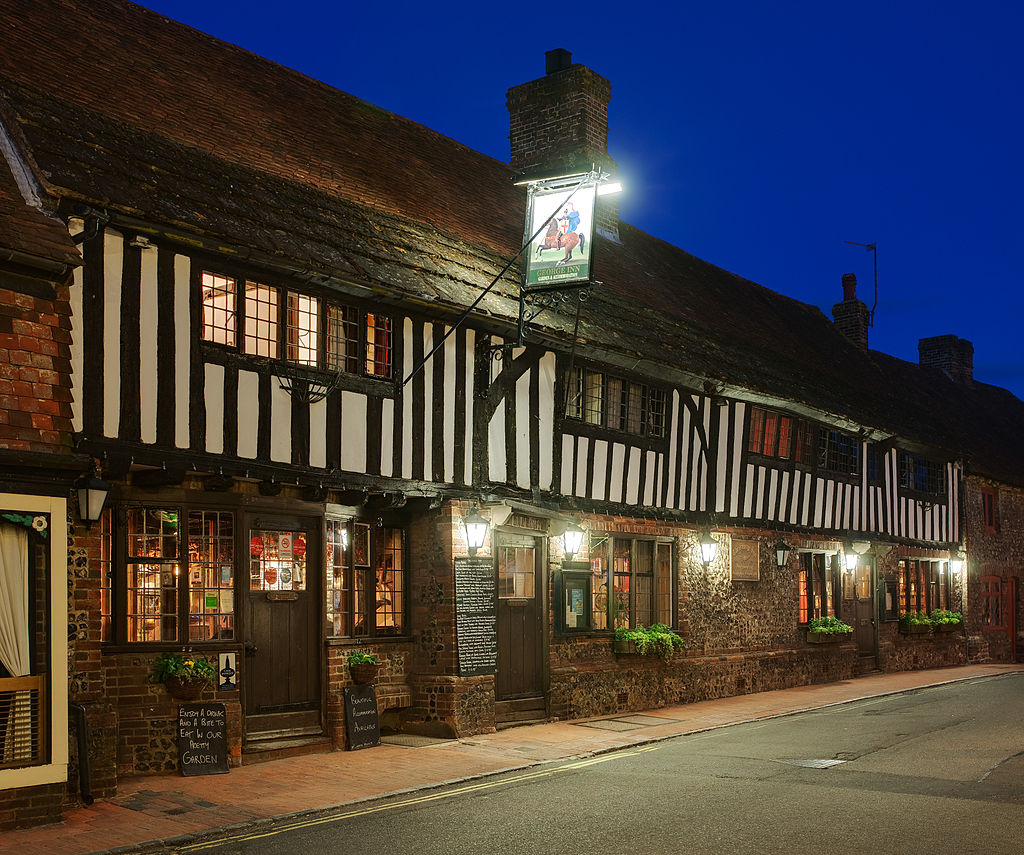
THE VILLAGE
The east side of the village lies by the River Cuckmere and is home to the village green, which is called the Tye. In the centre of the Tye is St. Andrew's Church. The 14th-century Alfriston Clergy House close by was originally a farmhouse but later became the vicarage. It is now maintained by the National Trust. It was the very first property bought by the Trust, in 1896, and it is a classic example of a Wealden hall house with thatched roof and timber-framed walls. It also has a tranquil garden and orchard on the banks of the Cuckmere. Also on the Tye is the Georgian Unitarian Chapel. The wooden sign for the village at the entrance to the Tye was carved by a previous vicar of the village who also repaired the Star Inn's red lion. The centre of the village is Market Square which contains a 15th-century market cross.
The village contains three pubs, the Star Inn, the Smugglers' Inn and the George Inn. A Channel 5 archaeology programme, Pub Dig, revealed evidence of long occupation of the site of the Smugglers' Inn, including signs of smuggling, animal butchery and neolithic activity at the rear of the building. In 2021, the Star Inn featured in another Channel 5 programme, called Alex Polizzi: My Hotel Nightmare, which documented the renovation of the 15th century, 37-bedroom coaching inn.
The South Downs Way crosses the river in Alfriston, and then continues up onto the Downs.
During the week leading up to the August bank holiday weekend, there is the Alfriston Festival, which ends with a Grand Fair on the Tye, with the proceeds going to several local national charities. It is attended by a large number of people from many miles around. In December there is also an Alfriston Christmas Weekend. The village also has its own clay pigeon shooting club. The Alfriston
Cricket Club has won the Cuckmere Valley League on nine occasions, with the earliest being 1920 and the most recent 2003.
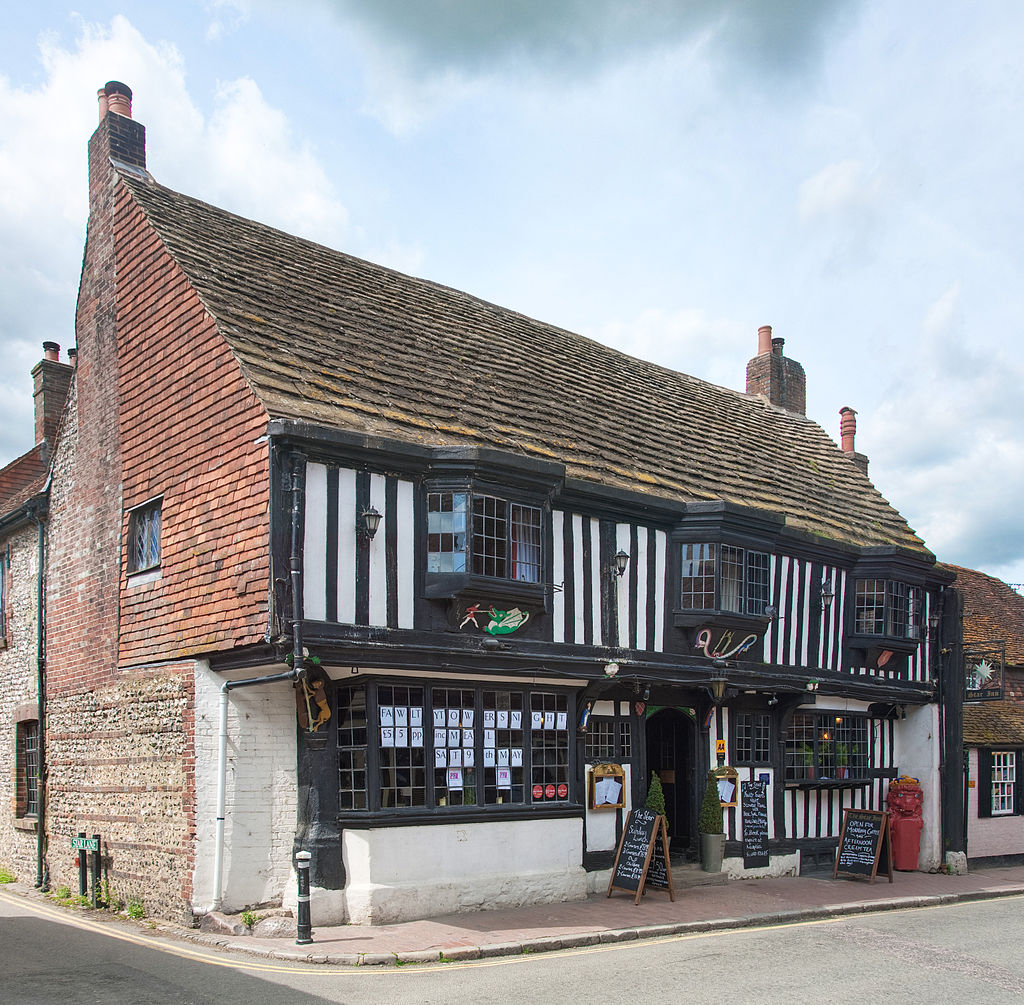
KING
ALFRED WAS NOT IN ALFRISTON WHEN HE BURT THE CAKES
One of the best known stories in English history is that of King Alfred and the cakes. Children are taught the story where Alfred is on the run from the Vikings, taking refuge in the home of a peasant woman.
This one of the most famous legends of English kings. Not in any way tied to Alfriston, but somehow (perhaps jokingly) allied to the
Sussex village, because of the similarity in names.
Amazingly, King Alfred the Great, leader of Wessex and defeater of the Danes is most commonly known for the time he managed to burn some loaves of bread by accident.
The King, exhausted and lost in the woods after beating the Danes in a vicious pitched battle, stumbles, bedraggled, upon a herdsman’s hut. The huntsman’s wife invites him in, and not recognising him, just assumes he is merely a soldier of Wessex, not the King! She kindly offers him rest and nourishment, as she has just put some cakes in the embers of her fire to bake.
She asks him to watch her cakes – small loaves of bread – baking by the
fire, but distracted by his problems, he lets the cakes burn and is roundly scolded by the woman.
The housewife pops out to collect some more firewood, and instructs the soldier to keep an eye on the cakes whilst she is away lest they burn, but almost as soon as she is leaves, poor Alfred falls asleep. A few minutes later the housewife returns, greeted by the smell of burning cakes and a sleeping soldier:
“What sort of careless man are you, who neglects to attend to burning bread? Never have I seen so negligent a man – one who doesn’t even know how to turn ash-baked bread – and yet when it is put in front of you, you’ll no doubt rush to eat it!”
WHEN & WHERE WAS THIS SUPPOSED TO HAVE TAKEN PLACE?
By 870 AD, all the independent Anglo-Saxon kingdoms except Wessex had been overrun by the Vikings. East Anglia, Northumbria, and Mercia had all fallen and now the Vikings were preparing to attack Wessex.
Alfred and his brother, King Aethelred of the West Saxons, met the Viking army at the battle of Ashdown near Reading on January 8th 871. After fierce fighting, the West Saxons managed to drive the Vikings back to Reading. However that April King Aethelred died at just 22 years old, and Alfred became king.
Alfred was not in good health (it is possible he suffered from Crohn’s Disease) and the years of fighting had taken their toll. Alfred was forced to ‘buy off’ the Vikings and make peace in order to prevent them from taking control of Wessex. For the next few years an uneasy peace existed between the two sides.
On January 6th 878 the Vikings under their king Guthrum launched a surprise attack on Alfred’s base at Chippenham. Alfred was forced to flee with just a small company of men into the Somerset Levels, an area he knew well from his childhood.
It is here that the story about the cakes is supposed to have taken place. Not in Alfriston as many would have you believe. Alfred and his men were hiding in the swamps and marshes of Somerset, living from day to day, dependent on the local people for food and shelter whilst fighting a guerrilla-style war with the Vikings.
KING ALFRED'S CAKES - THE FUGUS
King Alfred’s cakes look like hard, roundish lumps of coal stuck to the surface of decaying wood. The older they get, the darker they become. They don’t rot away quickly but can remain on deadwood for years.
Cap: round or cushion-shaped, 2–10 cm across and formally referred to as stroma. Matt, pinkish-brown when young, becoming black and shiny with a ‘burnt’ appearance as they age. The outer shell cracks easily.
Gills/spores: inside, the flesh is hard and a cross-section shows concentric zones of grey and black. Spores are released from the outer surface of the fungus through perithecia (small beak-like holes), leaving a darker area on the surrounding wood. Cells inside the fruit body eject the spores beyond the edge of the stroma, leaving a black spore print up to 3cm wide around the fungus.
Not to be confused with: Kretzschmaria deusta and other crust-like fungi of a similar colour. However, Kretzschmaria does not form ball or cushion-shaped growths or have concentric rings inside the fruit body.
King Alfred’s cakes are common and widespread in the UK. You can spot them in deciduous woodland in groups on dead and decaying
wood, especially fallen
beech and
ash branches.
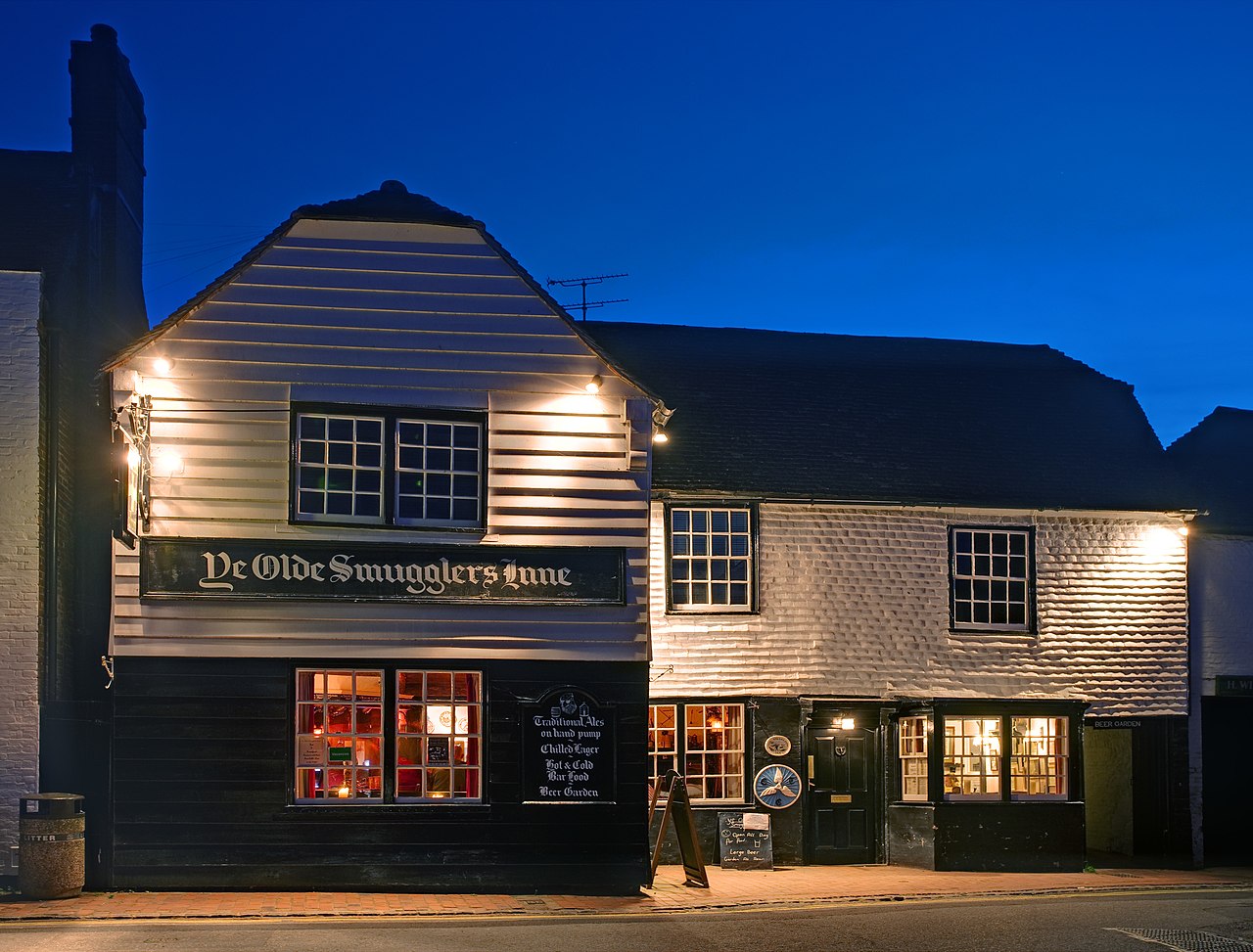
CHURCHES
The Alfriston parish church, dedicated to St Andrew, has Saxon origins, although most of the building dates from the 14th century. It is known, because of its size, as the Cathedral of the South Downs. It sits on a small, flint-walled mound in the middle of "the Tye" (the local village green), overlooking the River Cuckmere, and is surrounded by the flowered graveyard in which the Nobel laureate Sir Peter Medawar and the Labour politician Denis Healey are buried. It is built in the form of a cross. Today it is part of the united benefice which includes St Michael's Church at Litlington and All Saints Church at West Dean. Alfriston's former United Reformed Church is included in that grouping.
THE ARTS
In 1931 Eleanor Farjeon wrote the popular hymn "Morning Has Broken" in Alfriston; the hymn is supposedly about the beauty she saw around her in this village. The song was later recorded by Cat Stevens in the 1970s, reaching a wider audience.
The 1946 novel Uneasy Terms by crime and thriller writer Peter Cheyney is set mainly in and around Alfriston. The private detective Slim Callaghan stays in one of the pubs in Alfriston, which in the novel is called 'The Two Friars', whilst solving a murder at the nearby house 'Dark Spinney', home of the Alardyse family. The author describes the village thus: "Callaghan walked slowly through the open space at the end of Alfriston High Street. The afternoon sun shone on the old houses, and the tree in the middle of the little square threw a pleasant shadow." Several other local places are mentioned in the novel, among them Brighton,
Eastbourne,
Herstmonceux, Pevensey
Bay, Rottingdean and Polegate. The book was made into a film in 1948, starring Moira Lister and Michael Rennie. Cheyney also mentions Alfriston in several other of his novels, including Dance without Music (1947).
Another well-known thriller-writer, Victor Canning, sets the prologue to his 1956 novel The Hidden Face (US Burden of Proof) in Alfriston. The hero Peter Barlow comes to the village to confront a resident, James Gurney Hansford, who has cheated his father and driven him to suicide. They fight. Later Hansford is murdered and Barlow wrongly convicted of the crime.
The 1964 film The Chalk Garden starring Sir John Mills, Hayley Mills and Deborah Kerr was filmed in and around the village.
Peter Sellers' 1962 film Waltz of the Toreadors was also filmed here.
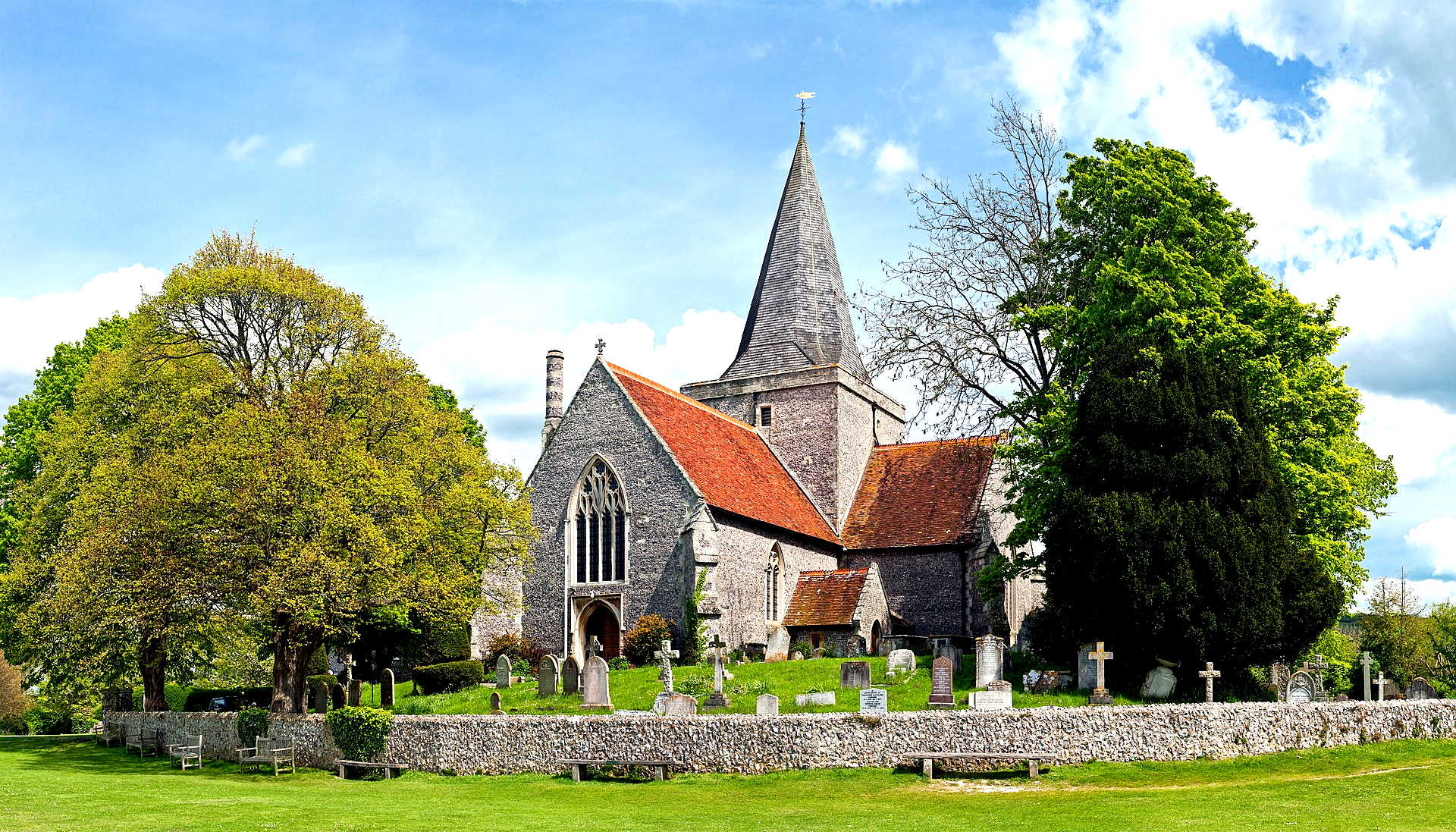
Church
of St. Andrew, Alfriston village, East Sussex
....
LINKS
& REFERENCE
https://www
